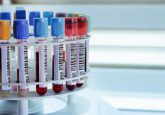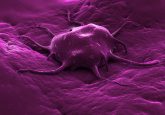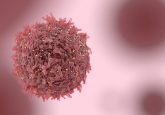Potential biomarker for lung cancer diagnosis
Blood-based diagnostic allows for differentiation between malignant and benign lung nodules without invasive surgery.
Xiao-jun Li of Integrated Diagnostics (WA, USA) and colleagues have reported the identification of a biomarker that could be used for lung cancer diagnosis. The laboratory-based blood test measures the expression and concentration of 13 proteins as identifiers for malignancy in lung nodules; around 20% of biopsied patients actually possess malignant lung nodules, therefore the use of this technique could prevent unnecessary invasive procedures for benign patients.
Using MRM-MS in combination with bioinformatics and systems biology, the researchers assayed the diagnostic potential of 371 possible lung cancer biomarkers in various combinations, before settling on the most effective 13. The findings suggest that the detection and the concentration of these biomarkers can identify a lung nodule as benign 90% of the time.
Using protein depletion technology provided by Sigma-Aldrich (MO, USA), Li and team focused on removing 50–200 medium-abundance proteins from the sample, allowing more conclusive MS data. According to Aaron Sin, Global Marketing Manager of Sigma-Aldrich, “The most disease-relevant proteins are also the rarest, comprising less than 2% of proteins in plasma or serum.” Using this test the biomarkers were found to circulate below 10ng/ml, the “previous sensitivity/reliability cliff for protein biomarker analysis by MS.”
The results suggest application of this research may save on invasive and costly procedures, benefiting both patient and clinician.
Sources: Li XJ, Hayward C, Fong PY et al. A blood-based proteomic classifier for the molecular characterization of pulmonary nodules. Sci. Transl. Med. 5(207), 207ra142 (2013); Indi® announces availability of Xpresys™ lung blood test with potential to help physicians identify more lung nodules as likely benign and more patients as possible candidates for active surveillance instead of invasive procedures.






